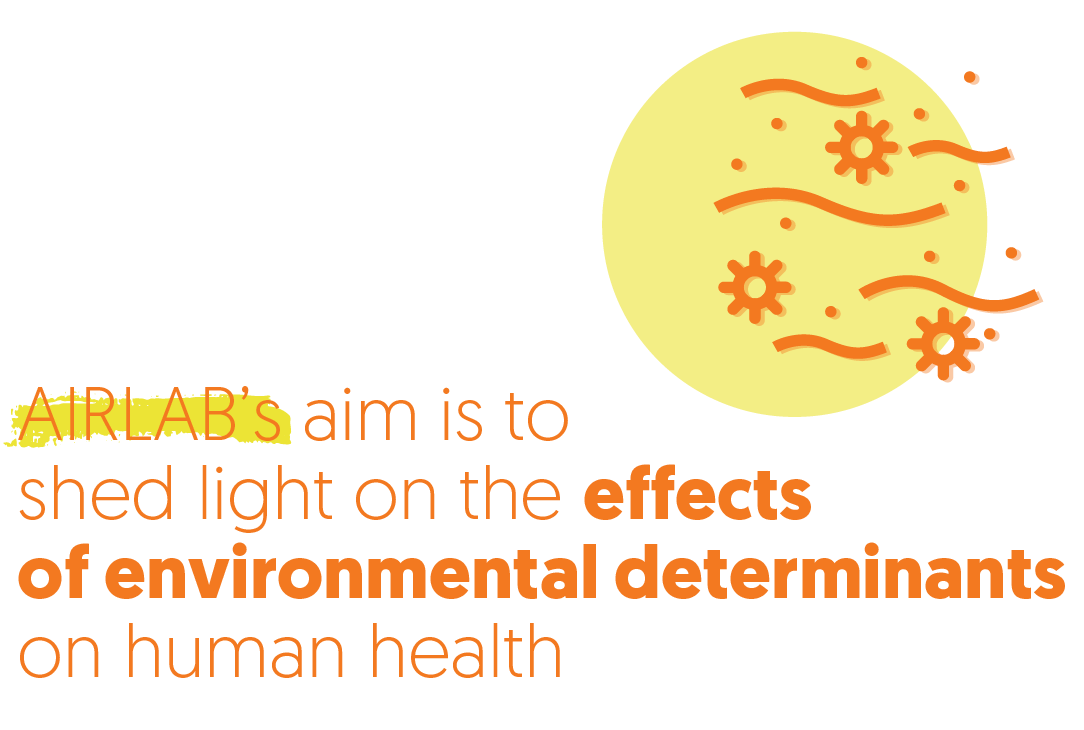HIGHLIGHTS
Is the answer in the air?
In 2019, the Climate and Health programme launched AIRLAB, a core facility aimed at disentangling the role of air composition in human health
It all started in Japan, with a mysterious inflammation of the blood vessels that mainly affects young children. The cause of Kawasaki disease remains unknown, but in 2011 and 2014, Xavier Rodó, Head of the Climate and Health programme, published findings that showed an association between seasonal outbreaks of the disease and winds coming from Northeast China, a region with intensive agriculture. This led to the first efforts to study Japan’s air microbiome by taking aerosol samples from small aircraft. Although Rodó and his team are still working to determine the causal agent of Kawasaki disease, their findings point to an airborne trigger. These results received much attention and led to a completely new approach to understanding Kawasaki and other diseases of unknown origin.
A core facility to study aerosols
This is how AIRLAB was born. The laboratory is a core facility focused on characterising aerosols from urban and rural environments. Analyses include not only the physical properties of particles (from coarse to ultrafine particles), but their chemical (metals, non-metals, etc.) and microbial (bacteria, fungi and viruses) composition. The AIRLAB team then applies machine learning to shed light on the associations between data obtained from air sample analyses and epidemiological records for several diseases. The lab also plans to study the effect of some of the airborne agents on human cell lines. “Our integrative approach from air characterisation to the demonstration of its impact on human health makes AIRLAB different and unique,” says Sílvia Borràs, who has led the lab since 2016. “We are a team of five people with different backgrounds and complementary expertise. Additionally, we assist other programme researchers with their air sampling and analysis, experimental design, instrument calibration, and data validation,” she adds.
AIRLAB’s current projects include: AIRBIOME, aimed at applying cutting-edge DNA sequencing technologies to unravel the microbial communities present in bioaerosols collected in Japan; MicroBioMap, focused on mapping spatial and temporal variations in the air microbiome in Barcelona; and Climate Shelters, which evaluates the impact of implementing measures to adapt schools to climate change, particularly to rising temperatures.
HIGHLIGHTS
Is the answer in the air?
In 2019, the Climate and Health programme launched AIRLAB, a core facility aimed at disentangling the role of air composition in human health
Photo: Billy Huynh / Unsplash

It all started in Japan, with a mysterious inflammation of the blood vessels that mainly affects young children. The cause of Kawasaki disease remains unknown, but in 2011 and 2014, Xavier Rodó, Head of the Climate and Health programme, published findings that showed an association between seasonal outbreaks of the disease and winds coming from Northeast China, a region with intensive agriculture. This led to the first efforts to study Japan’s air microbiome by taking aerosol samples from small aircraft. Although Rodó and his team are still working to determine the causal agent of Kawasaki disease, their findings point to an airborne trigger. These results received much attention and led to a completely new approach to understanding Kawasaki and other diseases of unknown origin.
A core facility to study aerosols
This is how AIRLAB was born. The laboratory is a core facility focused on characterising aerosols from urban and rural environments. Analyses include not only the physical properties of particles (from coarse to ultrafine particles), but their chemical (metals, non-metals, etc.) and microbial (bacteria, fungi and viruses) composition. The AIRLAB team then applies machine learning to shed light on the associations between data obtained from air sample analyses and epidemiological records for several diseases. The lab also plans to study the effect of some of the airborne agents on human cell lines. “Our integrative approach from air characterisation to the demonstration of its impact on human health makes AIRLAB different and unique,” says Sílvia Borràs, who has led the lab since 2016. “We are a team of five people with different backgrounds and complementary expertise. Additionally, we assist other programme researchers with their air sampling and analysis, experimental design, instrument calibration, and data validation,” she adds.
AIRLAB’s current projects include: AIRBIOME, aimed at applying cutting-edge DNA sequencing technologies to unravel the microbial communities present in bioaerosols collected in Japan; MicroBioMap, focused on mapping spatial and temporal variations in the air microbiome in Barcelona; and Climate Shelters, which evaluates the impact of implementing measures to adapt schools to climate change, particularly to rising temperatures.









